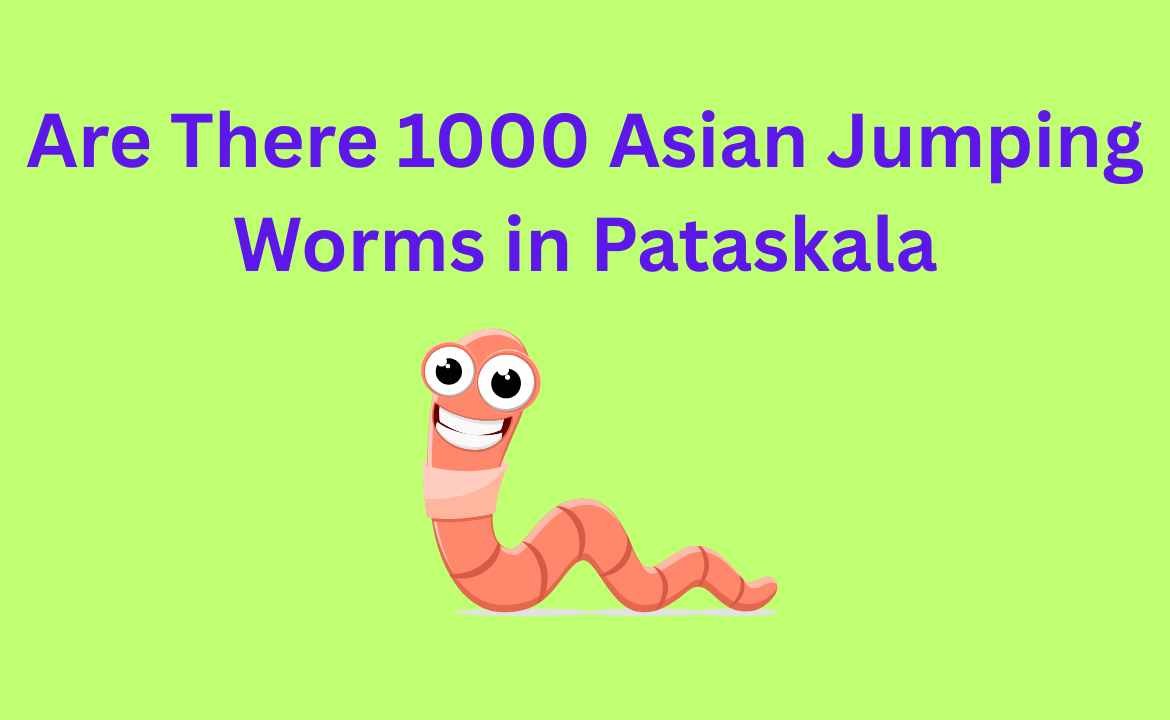The question Are there 1000 Asian jumping worms in Pataskala? is gaining attention among gardeners, homeowners, and environmentalists. This inquiry points to a growing concern about invasive species disrupting local ecosystems. Pataskala, a city in Ohio, may be experiencing an increase in the population of these aggressive earthworms, known for their destructive nature and rapid reproduction.
Asian jumping worms, also known as Amynthas species, are different from the typical earthworms we’re used to seeing. They are invasive, aggressive, and capable of dramatically altering soil composition in a very short time.
What Are Asian Jumping Worms?
Asian jumping worms are a group of earthworms that include Amynthas agrestis, Amynthas tokioensis, and Metaphire hilgendorfi. They are originally from East Asia but have been introduced to various parts of the United States, including Ohio.
Why They’re Called Jumping Worms
These worms get their name because of their unique behavior. When disturbed, they thrash violently and can jump several inches into the air. Unlike typical earthworms, which move slowly and burrow deeply, jumping worms stay near the surface and move rapidly.
Fast Reproduction
One reason people are asking whether there are 1000 Asian jumping worms in Pataskala is that these worms reproduce at an alarming rate. A single worm can produce dozens of cocoons in a single season, each containing multiple hatchlings.
Why 1000 Worms Could Be a Real Concern
The number “1000” may seem exaggerated, but it’s very plausible given how quickly these worms can spread in favorable conditions.
Rapid Infestation
In favorable climates with moist soil and organic matter, populations of Asian jumping worms can explode. They can infest an entire backyard or garden in just one season. Reports in nearby cities have shown infestations numbering in the thousands, especially where compost or mulch has been introduced from infected areas.
Ecological Disruption
Asian jumping worms are a major threat to soil health. Unlike native worms, they consume the top layer of organic material quickly, leaving behind a grainy, coffee-ground-like soil. This significantly reduces the nutrients available for plants and can lead to reduced crop yields and dying gardens.
Pataskala’s Environmental Risk
Pataskala, located in Licking County, has a mix of urban, suburban, and rural environments. This makes it particularly vulnerable to infestations of invasive species like Asian jumping worms.
Home Gardens and Landscapes at Risk
Residents with gardens, compost bins, and flowerbeds are especially at risk. Many gardeners in Pataskala are concerned about soil erosion, poor plant growth, and the sudden appearance of worms that seem to “jump” out of the ground.
Public Parks and Forested Areas
Local parks and wooded areas are also at risk. The worms not only destroy the topsoil but also affect the root systems of native trees and plants. In areas like community trails and conservation land, the presence of even a few hundred worms can become a massive problem over time.
Are There Really 1000 Asian Jumping Worms in Pataskala?
While no official public count has confirmed the presence of exactly 1000 Asian jumping worms in Pataskala, it’s important to understand that this number is entirely plausible.
Evidence of Spread
Residents have reported unusual worm activity in gardens and public green spaces. The distinct movement of these worms, along with changes in soil texture, are key signs of their presence.
Unchecked Growth
Because these worms are so easily transported in mulch, soil, compost, and plant containers, a small infestation can become a large one in a matter of months. A backyard with 50 worms in early spring could have well over 1000 by late summer.
What to Look for in Your Garden
If you’re wondering whether you might have Asian jumping worms in your area, especially in Pataskala, here are some signs to watch for:
Visual Signs
- Worms that move erratically or thrash violently when touched
- Worms with a smooth, milky-white clitellum (band)
- Soil that looks like dry coffee grounds
Plant Health
- Wilting plants despite regular watering
- Soil that feels loose or unusually grainy
- Roots exposed due to loss of topsoil
Preventing and Controlling the Infestation
If the concern about whether there are 1000 Asian jumping worms in Pataskala turns out to be valid, early detection and responsible soil management are key.
Inspect Before You Plant
Always check potted plants and compost for signs of jumping worms. Use certified, heat-treated compost and mulch to prevent accidental introduction of cocoons or adult worms.
Limit Soil Movement
Avoid sharing soil, compost, or mulch with neighbors unless it’s been properly treated. Many infestations start with just a few cocoons hidden in a plant pot or garden bag.
Physical Removal
Handpicking worms and disposing of them properly (preferably by sealing them in a plastic bag and leaving them in the sun) can help control small infestations.
Community Awareness Is Crucial
The potential presence of 1000 Asian jumping worms in Pataskala should not just be a private concern—it’s a community issue. Without public awareness and coordinated action, infestations can spread from one yard to an entire neighborhood.
Educational Campaigns
Local gardening groups and environmental agencies can help by organizing workshops, distributing flyers, and educating residents about proper soil handling techniques.
Volunteer Patrols
Organized garden walks or soil inspections can help detect and report infestations early. Volunteers trained to identify the worms can act as a first line of defense.
Final Thoughts
So, are there 1000 Asian jumping worms in Pataskala? While a precise number is difficult to confirm, all signs point to the possibility of a growing infestation. These invasive worms reproduce rapidly, spread easily, and cause significant environmental damage. With careful attention, informed residents, and early intervention, Pataskala can protect its gardens, parks, and ecosystems from long-term harm.
